Potřebujeme váš souhlas k využití jednotlivých dat, aby se vám mimo jiné mohly ukazovat informace týkající se vašich zájmů. Souhlas udělíte kliknutím na tlačítko „OK“.
ASTM D2616-12
Standard Test Method for Evaluation of Visual Color Difference With a Gray Scale
Automaticky přeložený název:
Standardní zkušební metoda pro vyhodnocení vizuální rozdíl v barvě s šedým Scale
NORMA vydána dne 1.7.2012
Informace o normě:
Označení normy: ASTM D2616-12
Poznámka: NEPLATNÁ
Datum vydání normy: 1.7.2012
Kód zboží: NS-20905
Počet stran: 3
Přibližná hmotnost: 9 g (0.02 liber)
Země: Americká technická norma
Kategorie: Technické normy ASTM
Kategorie - podobné normy:
Anotace textu normy ASTM D2616-12 :
Keywords:
AATCC, color difference, gray scale, ICS Number Code 17.180.20 (Colours and measurement of light)
Doplňující informace
| Significance and Use | ||||||||||||||||||||||||||||||||
|
The total perceived color difference between two non-self luminous specimens is compared as an equivalent lightness difference between two neutral gray specimens on a gray scale. A fundamental assumption is made that the total color difference can be so evaluated in terms of an equivalent lightness difference. Only the total color differences, that is, a summation of the differences in hue, lightness, and chroma between two specimens is evaluated; this test method is not applicable to the separate precise evaluation of the hue, lightness, and chroma components of color difference. The total color difference determined by this test method depends on the degree of uniformity of the specimens and on the sharpness of the dividing line between them. The color difference between specimens having rough or mottled surfaces appears smaller than it would if the specimens had smooth and uniform surfaces. Thus the equivalent CIELAB lightness difference determined for non-uniform specimens will be smaller than for uniform specimens. Likewise, specimens whose dividing line is not sharp will appear to have smaller color differences than those with sharp dividing lines, and for this reason, the equivalent visually observed CIELAB lightness differences will be smaller than the color differences obtained from instrumental measurements. A physically sharp border between colors differing slightly in the yellow-blue direction in color space appears diffuse. The perceived color difference is noticeably increased by a hairline black separation. This technique imposes a more rigorous test of such small differences. In the CIELAB system, a unit of color difference is intended to represent the same visual difference in each of the three attributes; lightness, hue and chroma or alternatively lightness, redness-greeness, yellowness-blueness. It is valid to express color differences that are not simply lightness differences by comparison to a lightness-difference scale. Personnel to be employed in the evaluation of color differences with the paired gray scale should be tested for color vision using the procedures in Guide E1499. TABLE 1 Gray Scale Characteristics
|
||||||||||||||||||||||||||||||||
| 1. Scope | ||||||||||||||||||||||||||||||||
|
1.1 This test method describes a painted gray scale and the procedure to be used in the visual evaluation of color differences of non-self luminous materials by comparison to this scale. 1.2 This standard does not purport to address all of the safety concerns, if any, associated with its use. It is the responsibility of the user of this standard to establish appropriate safety and health practices and determine the applicability of regulatory limitations prior to use. |
||||||||||||||||||||||||||||||||
| 2. Referenced Documents | ||||||||||||||||||||||||||||||||
|
||||||||||||||||||||||||||||||||
Podobné normy:
Historická
1.6.2008
Historická
1.11.2011
Historická
1.1.2013
Historická
1.7.2010
Historická
1.5.2013
Historická
1.12.2009
Doporučujeme:
Aktualizace technických norem
Chcete mít jistotu, že používáte pouze platné technické normy?
Nabízíme Vám řešení, které Vám zajistí měsíční přehled o aktuálnosti norem, které používáte.
Chcete vědět více informací? Podívejte se na tuto stránku.


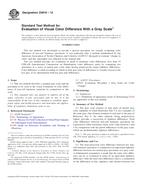
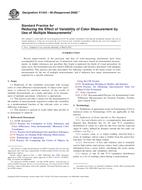 ASTM E1345-98(2008)e..
ASTM E1345-98(2008)e.. ASTM E1348-11
ASTM E1348-11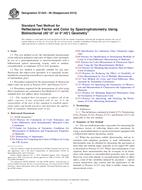 ASTM E1349-06(2013)..
ASTM E1349-06(2013)..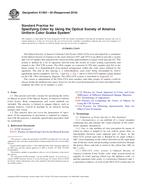 ASTM E1360-05(2010)..
ASTM E1360-05(2010)..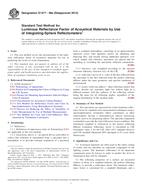 ASTM E1477-98a(2013)..
ASTM E1477-98a(2013)..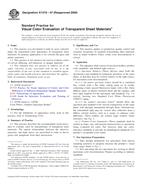 ASTM E1478-97(2009)..
ASTM E1478-97(2009)..
 Cookies
Cookies
